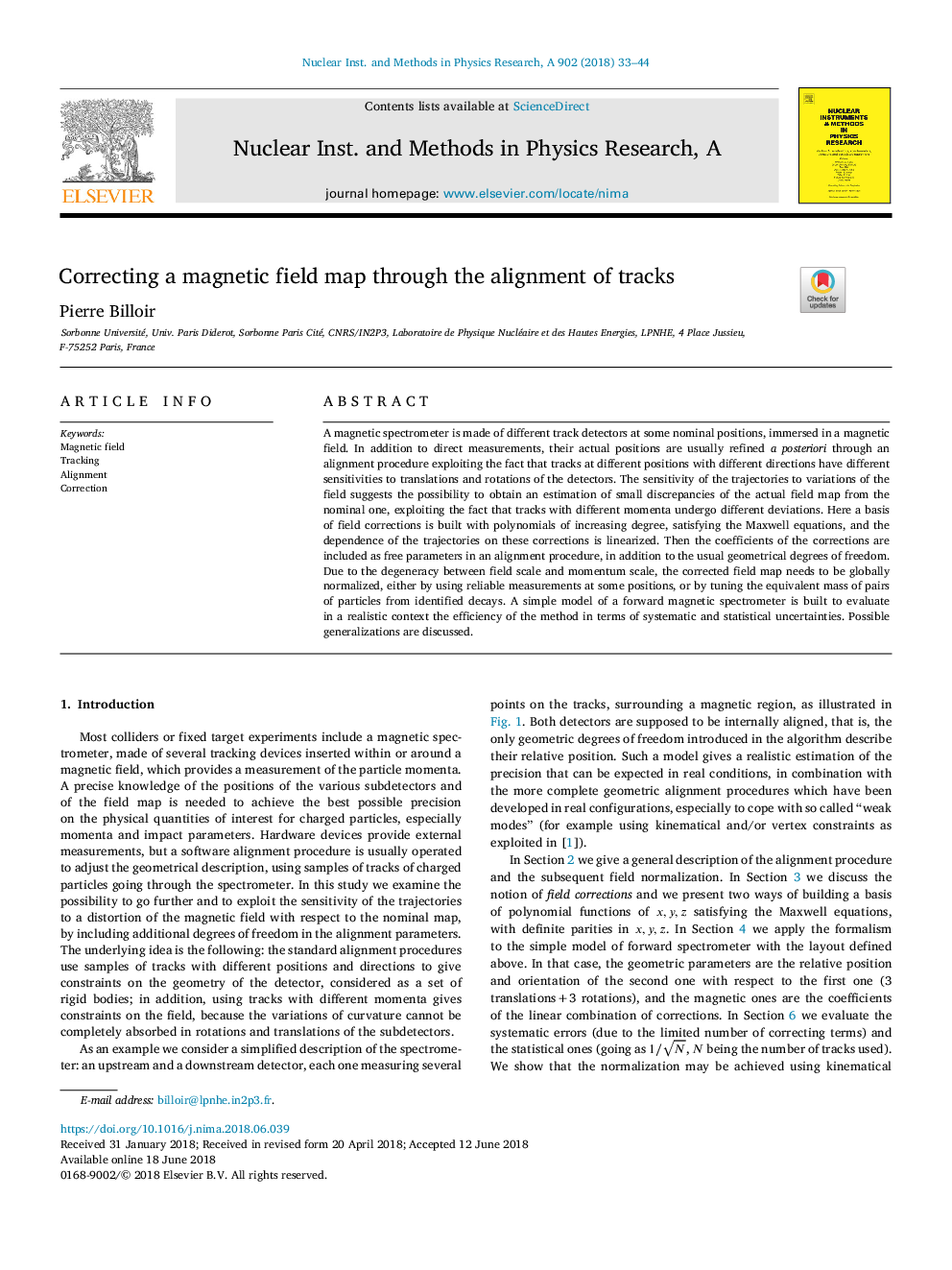| Article ID | Journal | Published Year | Pages | File Type |
|---|---|---|---|---|
| 8166027 | Nuclear Instruments and Methods in Physics Research Section A: Accelerators, Spectrometers, Detectors and Associated Equipment | 2018 | 12 Pages |
Abstract
A magnetic spectrometer is made of different track detectors at some nominal positions, immersed in a magnetic field. In addition to direct measurements, their actual positions are usually refined a posteriori through an alignment procedure exploiting the fact that tracks at different positions with different directions have different sensitivities to translations and rotations of the detectors. The sensitivity of the trajectories to variations of the field suggests the possibility to obtain an estimation of small discrepancies of the actual field map from the nominal one, exploiting the fact that tracks with different momenta undergo different deviations. Here a basis of field corrections is built with polynomials of increasing degree, satisfying the Maxwell equations, and the dependence of the trajectories on these corrections is linearized. Then the coefficients of the corrections are included as free parameters in an alignment procedure, in addition to the usual geometrical degrees of freedom. Due to the degeneracy between field scale and momentum scale, the corrected field map needs to be globally normalized, either by using reliable measurements at some positions, or by tuning the equivalent mass of pairs of particles from identified decays. A simple model of a forward magnetic spectrometer is built to evaluate in a realistic context the efficiency of the method in terms of systematic and statistical uncertainties. Possible generalizations are discussed.
Related Topics
Physical Sciences and Engineering
Physics and Astronomy
Instrumentation
Authors
Pierre Billoir,
